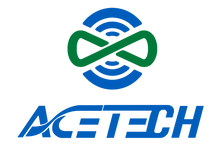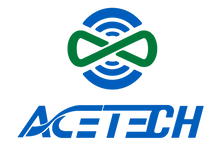
Contact Us
Water-to-water CO2 Heat Pump Control for Optimum Efficiency
Scientists led by Dongguan University of Science and Technology, China, have proposed a new method for controlling a water-to-water heat pump that uses carbon dioxide as a refrigerant. The model-based optimal control (MC) and typical control (TC) mechanisms were tested on a virtual heat pump and improved the COE by 14.6%.
 Source from: ScienceDirectThere is no effective MC optimization strategy for water-to-water CO2 heat pumps aimed at reducing the computational burden. Therefore, this study aims to develop an MC to improve the COP of a water-to-water CO2 heat pump by identifying the optimal variables.“”The system model was derived using extensive data from the virtual CO₂ heat pump, and its reliability was verified prior to further simulations."”
Source from: ScienceDirectThere is no effective MC optimization strategy for water-to-water CO2 heat pumps aimed at reducing the computational burden. Therefore, this study aims to develop an MC to improve the COP of a water-to-water CO2 heat pump by identifying the optimal variables.“”The system model was derived using extensive data from the virtual CO₂ heat pump, and its reliability was verified prior to further simulations."”The water-to-water CO2 heat pump consists of an evaporator (ET), a liquid receiver (LR), an internal heat exchanger (IHX), a compressor (CM), a gas cooler (GC), an expansion valve (EX), and two recirculation pumps (pm).The TC employs fixed setpoints and a simple control loop to regulate specific parameters without regard to system-wide optimization.
To develop a more refined MC, the team constructed a virtual CO2 heat pump in MATLAB and REFPROP. 3969 cases were used to model the system and describe how the heat pump responds to changes in operating conditions. An experimental setup was designed to validate the system, which showed an average error of 4.4% for the gas cooler outlet temperature and 7.4% for the compressor power.
The scientists analyzed the thermodynamic behavior of the system components and developed an optimization algorithm to maximize the COE by determining the optimal discharge pressure and gas cooler outlet water temperature setpoints.They tested the system in three case studies with MC and TC models.
In the first case study, the researchers fixed the inlet temperature of the evaporator mixture at 18°C, randomized the inlet water temperature of the gas cooler between 29°C and 35°C, and varied the target outlet temperature of the gas cooler between 40°C and 48°C. The COP of the MC was 9.9% higher than that of the TC, with an average COP of 2.49 compared to 2.265 for the TC.
In the second case study, the gas cooler inlet water temperature was fixed at 32°C, the evaporator mixture inlet temperature was 17°C to 19°C, and the target outlet temperature of the gas cooler was varied randomly between 40°C to 48°C. The mean COP of MC was 2.482, which was 8% better than that of TC with a mean COP of 2.3.
In the final case study, where the inlet temperature of the evaporator mixture was 17°C to 19°C, the inlet water temperature of the gas cooler was 29°C to 35°C, and the outlet water temperature of the gas cooler was 40°C to 48°C, the efficiency of the MC was improved by 14.6%, with an average COP of 2.458, compared to 2.145 for the TC.
“The system computation time with the MC optimization strategy was reduced by 42.2% to 47.1% compared to the conventional optimization strategy,” the team said. “These results indicate that the formulated MC can effectively improve the energy efficiency of water-to-water CO2 heat pumps. The developed multiplexed optimization strategy effectively reduces the computational effort and slightly decreases the average COP. therefore, this study provides guidance for implementing MC in water-to-water CO2 heat pumps, which helps to improve the COP.”
They presented their results in “A study of optimal control approaches of water-to-water CO2 heat pump for domestic hot water use,” which was recently published in Case Studies in Thermal Engineering. Scientists from China’s Dongguan University of Technology, Guangdong University of Technology, and Norway’s Norwegian University of Science and Technology jointly conducted the research.
Our expert will reach you out if you have any questions!
